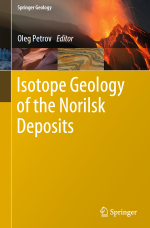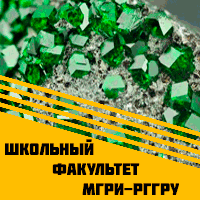Добрый день, Коллеги. Важное сообщение, просьба принять участие. Музей Ферсмана ищет помощь для реставрационных работ в помещении. Подробности по ссылке
Isotope geology of the Norilsk deposits / Изотопная геология Норильских месторождений
The methodology of isotope and geochemical studies involves the most complicated analytical procedures to obtain high-quality results and application to the analytical data of the genetic criteria developed by isotope geochemistry. Our results and recommendations can be regarded as innovative; they are for the first time based on such a broad and complete (11 systems) set of studies of independent isotope systems with nano- and micro-amounts of matter.
None of the known isotope geochemical and geochronological methods is universal and self-sufficient in solving various geological problems. A successful application of such methods is achieved through an integrated approach. It is possible to ensure, technically and organizationally, the necessary efficiency of the studies using a wide range of methods including the finest ones only within a single internationally certified analytical centre. In this regard, the importance of using the facilities of the Centre of Isotopic Research (CIR) at VSEGEI for the creation, setting-up, adaptation, development, approval, certification and practical application of the innovative methods of isotopic studies of geological objects cannot be overestimated.
In samples of ores, rocks and minerals, isotopic composition of the components were studied including those in the fluids of the mineral formation environment in general and ore formation environment, in particular. On the basis of the analytical results, the genetic isotope criteria were formulated making it possible to diagnose the sources of the matter of rocks and ores, to reveal the formation conditions of mineral deposits. Especially important is the diagnosis of the contribution of matter of different geospheres—crust and mantle.
Many researchers now regard the crust–mantle interaction as a determining factor in the ore generation processes. An effective use of the obtained empirical isotope data allows not only to create new, more correct models of deposit formation, but also to find the isotopic search criteria.
Isotopic composition of helium (3He/4He isotope ratio) is used to diagnose the contribution of the mantle helium. The above ratio in the upper mantle is about 600-fold versus that in helium forming in crustal rocks. This is the strongest and most unambiguous criterion of the mantle origin of fluids. <...>




